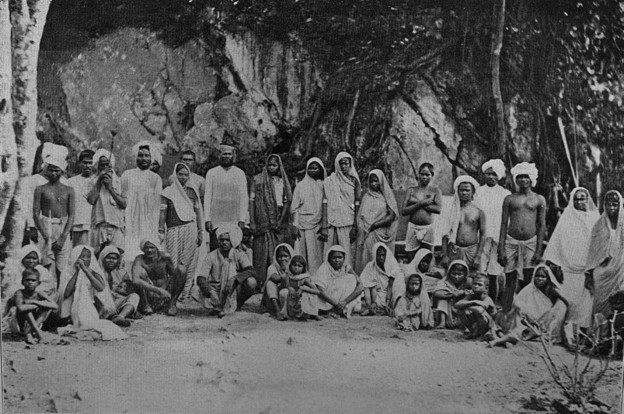A century after the end of Indian indenture
An introduction to the scope of this project

This year marks a century since the system that displaced over three million South Asians ended. From 1838–1917, the British, after slavery was abolished, transported 341,600 indentured laborers from India to British Guiana. Worldwide they displaced 3.5 million Indians who they recruited to work sugar plantations in the Caribbean, South Africa, Réunion, Ile de Maurice, Fiji, and South America.
Some of the migrants, the girmitiyas, the kantrákis, the coolies, chose to sail across the seas into a life of new adventure. Some were forcefully taken, duped by promises that were never to be fulfilled.
All for the sake of sugar, new cultures, kinships, and identities formed; a diaspora was born.
In the coming weeks, I, a descendant of cutlass grasping Coolies, will consider the ways that people theorize our diaspora — Coolitude, Dougla poetics, Girmit Ideology, and Kala Pani poetics. I will read texts and present issues that our postcolonial communities face. Included will be discussions of poetry, music, art, as well as interviews of some of the freshest voices speaking out against power and how they have influenced a Coolitude poetics. There will also be writing prompts for other Indian Labor Diasporic peoples who will chance upon these posts and look to them as a kind of representation as it is lacking in the United States.
When people use the word diaspora to refer to South Asians living overseas, they refer to “Old” and “New,” if they refer to us at all. Most people are unaware of our painful and colorful histories, preferring instead a simple image — that of the happy immigrant (doctors, scientists, engineers) coming to the West for a “better life.” Hard to imagine they mean coming to a country where brown bodies are profiled and hunted down.
We are not “Old.” We are still around and our cultures and languages are still evolving, changing, Creolizing to fit our new contexts as we continue our trajectory of migration. When I define diaspora I center my community. We were cut off from contact with India, Pakistan, Bangladesh, Nepal, and Sri Lanka for over a century and developed our own understandings of “Indian-ness” delineated and created by the communities that we belonged to. The separation period was a period of incubation, filled with cultural shifts and influences by local peoples: descendants of Africans brought to work to death in the British colonies, the Portuguese, Indigenous peoples of our new geographical regions, and so many more. Many immigrants from South Asia today have connections that they keep through telephones, email, and by returning home.
There was no real returning or maintaining any kind of connection for some of us. These are my people, the forgotten, the eulogized, the ones who are preserved in folk songs sung in cane fields, rice paddies, and across rivers and oceans. We are diasporic without a chance of return. In fact, we do not even want it anymore.
What I hope this look will achieve is a kind of decentering of stasis in identity formation, allowing room for people to understand us as culturally dynamic, multicultural, and enduring.
Coolitude: Poetics of the Indian Labor Diaspora